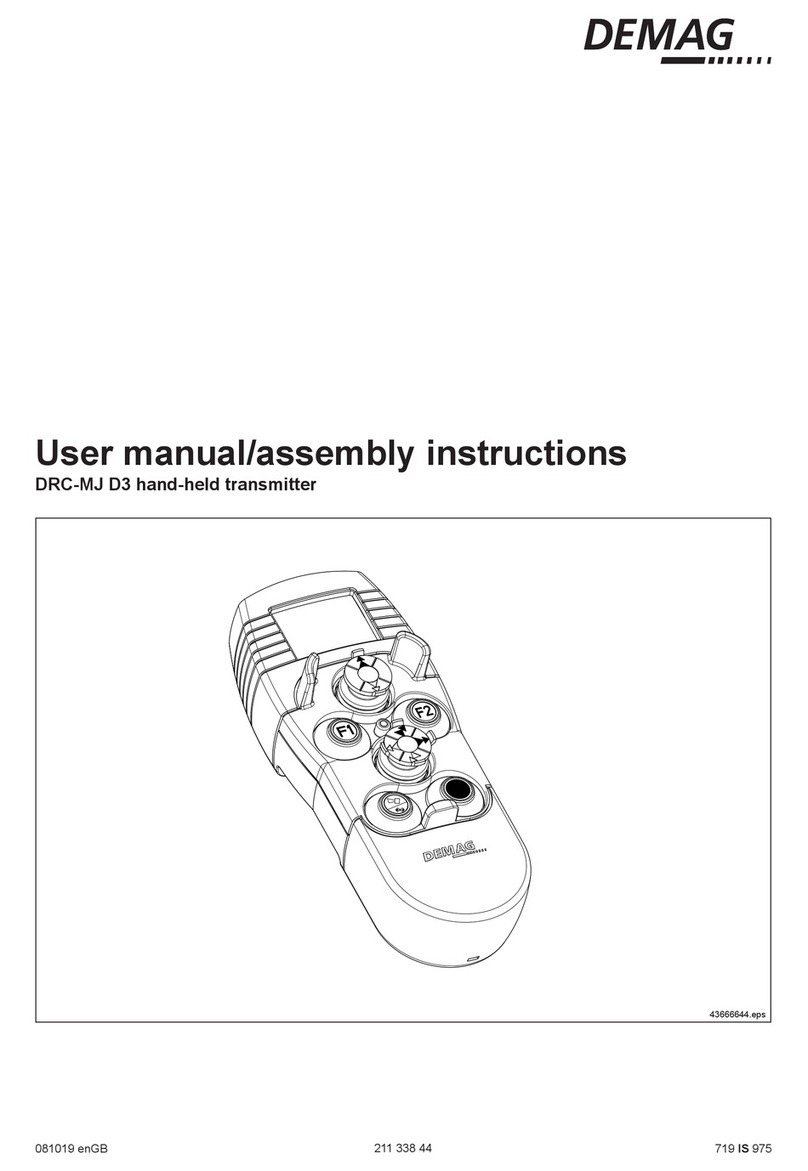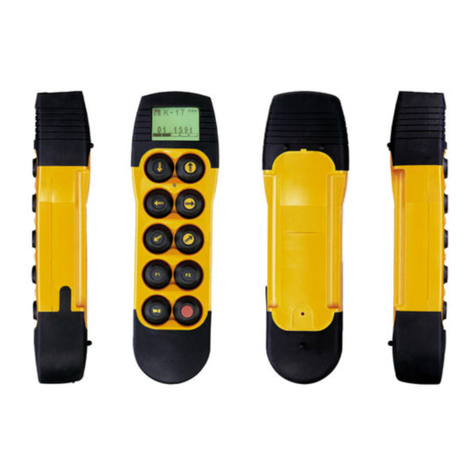9
21492044.indd/131107
2.4 Basic information on
safety
2.3 Inappropriate use Certain work and practices are prohibited when using the system as they may
involve danger to life and limb and result in lasting damage to the product, e.g.:
•Manipulating electrical equipment
•Connecting the unit to power supply with voltage or frequency other than those
specified on the type plate
•Non-compliance with specified mounting positions
•Non-compliance with the max. permissible operating temperature.
Other inappropriate applications may be caused by non-compliance with the infor-
mation in the operating instructions for the radios receiver used (DRC-DR/DRC-
MP) or for the machine to be controlled.
Persons under the influence of drugs, alcohol or medicines which affect reactions
must not install, operate, put into service, maintain, repair or disassemble the
product. Any conversions and modifications to the installation must comply with
the safety requirements. Work on electrical equipment may only be carried out by
specialists in accordance with electrical regulations.
In the event of malfunctions, the system must be shutdown, switched off and the
relevant main switches locked immediately.
Malfunctions must be eliminated immediately.
National accident prevention regulations and codes of practice and general safety
regulations must be observed when operating our products. Important information
and instructions are marked by corresponding symbols. Follow these operating
and safety instructions to avoid personal injury and damage to machinery.
The operating instructions must be kept available at the place where the system is
in use at all times.
They include significant aspects and appropriate excerpts from the relevant guide-
lines, standards and regulations. The owner must instruct his personnel appropri-
ately. If the safety instructions given are not observed in any way, personal injury
or even death can result.
Observe general statutory and other obligatory regulations relating to accident
prevention and environmental protection and basic health and safety requirements
in addition to those included in these operating instructions.
Such requirements may also relate, for example, to the handling of hazardous
materials or the provision/wearing of personal protection equipment.
Comply with these regulations and general accident regulations relevant for the
place at which the system is used and follow the instructions therein when working
with the system.
The system may still constitute a danger to life and limb if it is not installed, oper-
ated, maintained or used appropriately by personnel which have not been trained
or specially instructed.
The safety instructions must, if required, be supplemented by the owner with in-
structions and information (e.g. factory regulations) relating to organization of work,
working procedures, operating personnel, etc. Supervising and reporting obliga-
tions as well as special operating conditions must also be taken into consideration.
Supervising and reporting obligations as well as special operating conditions must
also be taken into consideration.
Personnel assigned to working with the system must have read the operating in-
structions and the safety instructions.
All activities relating to the system which are not described in the operating instruc-
tions may only be carried out by specifically trained specialist personnel.
The owner must ensure that personnel work in a safety and hazard-conscious
manner in compliance with the operating instructions.
The owner must ensure that the system is only operated when in proper working
order and that all relevant safety requirements and regulations are complied with.





























